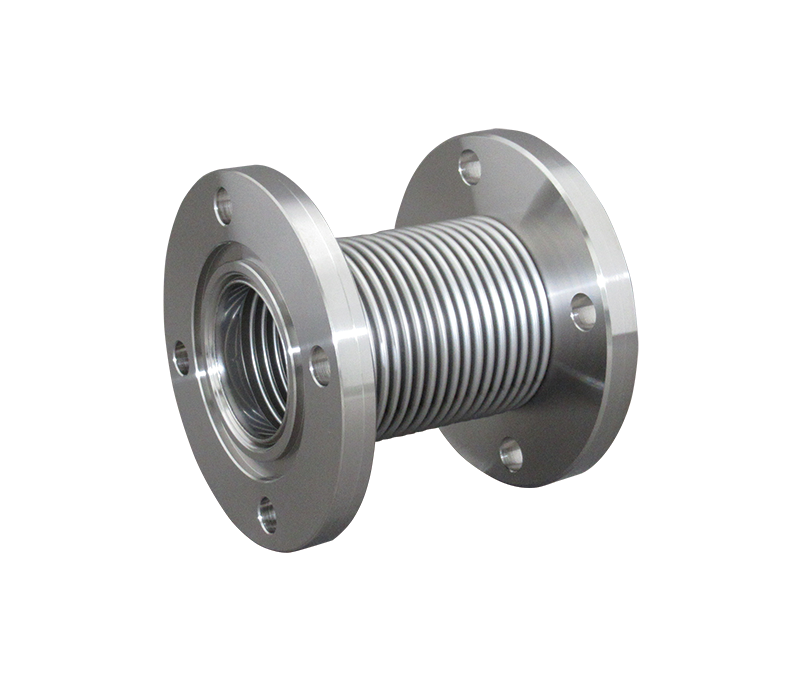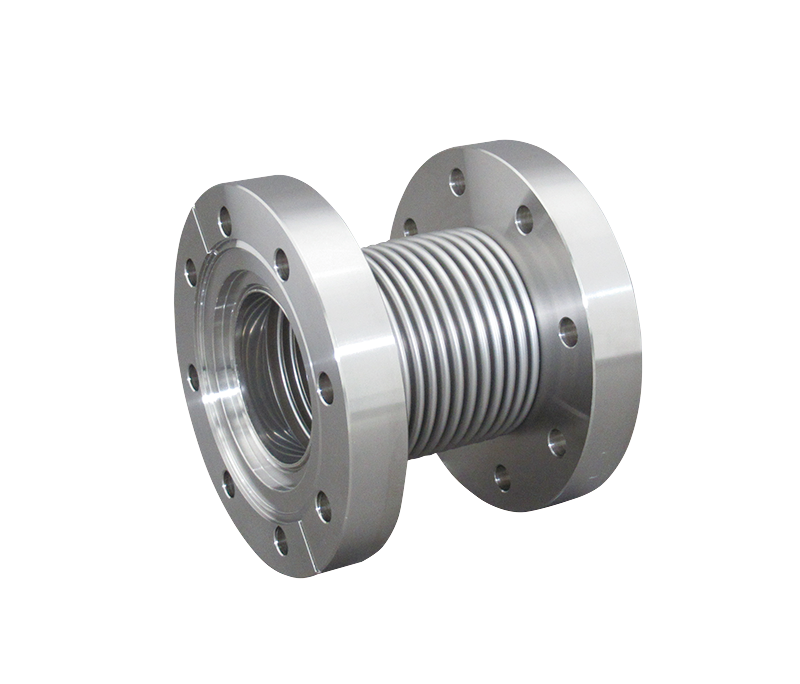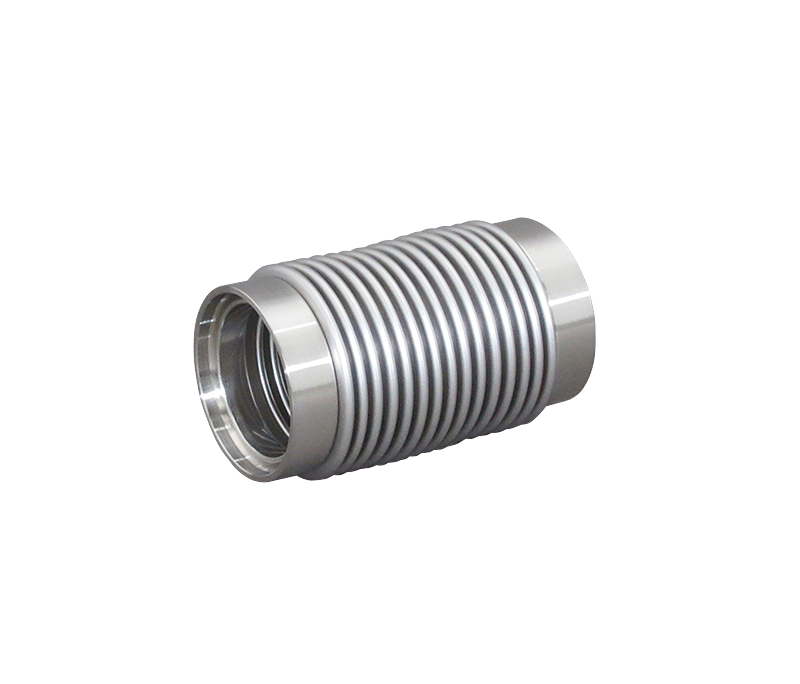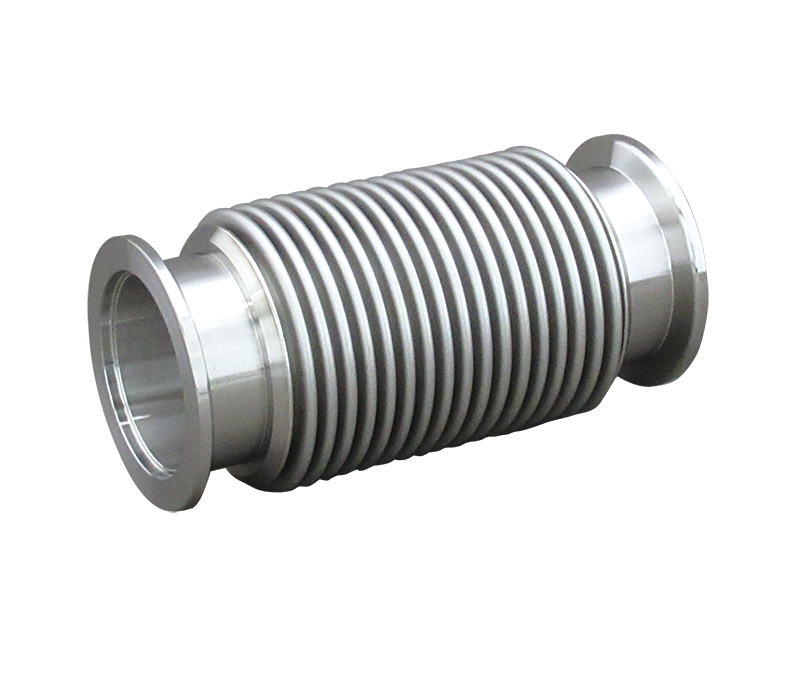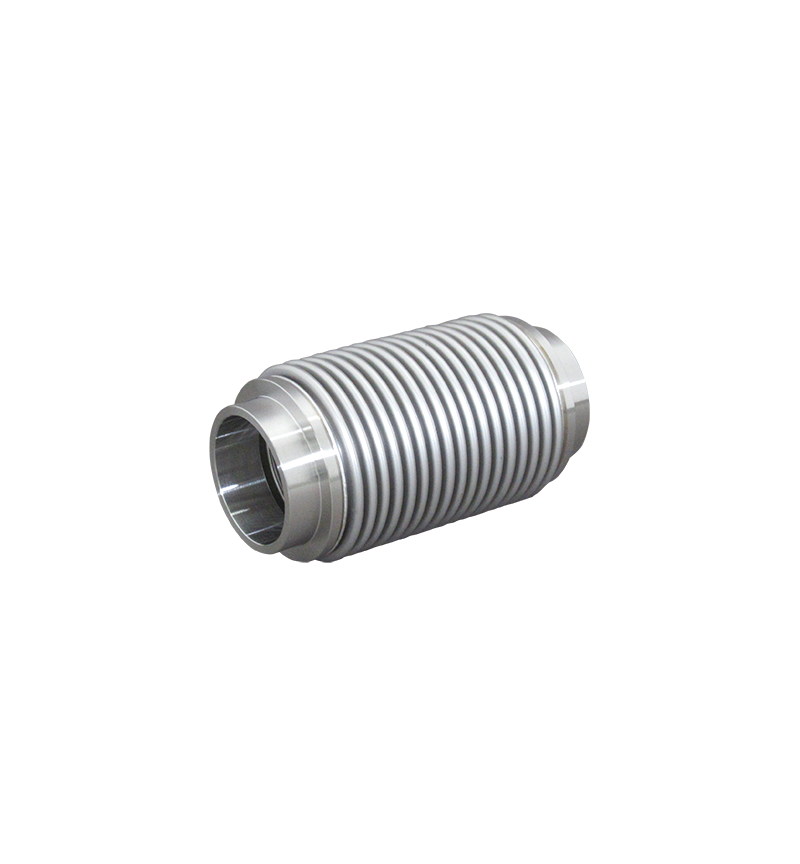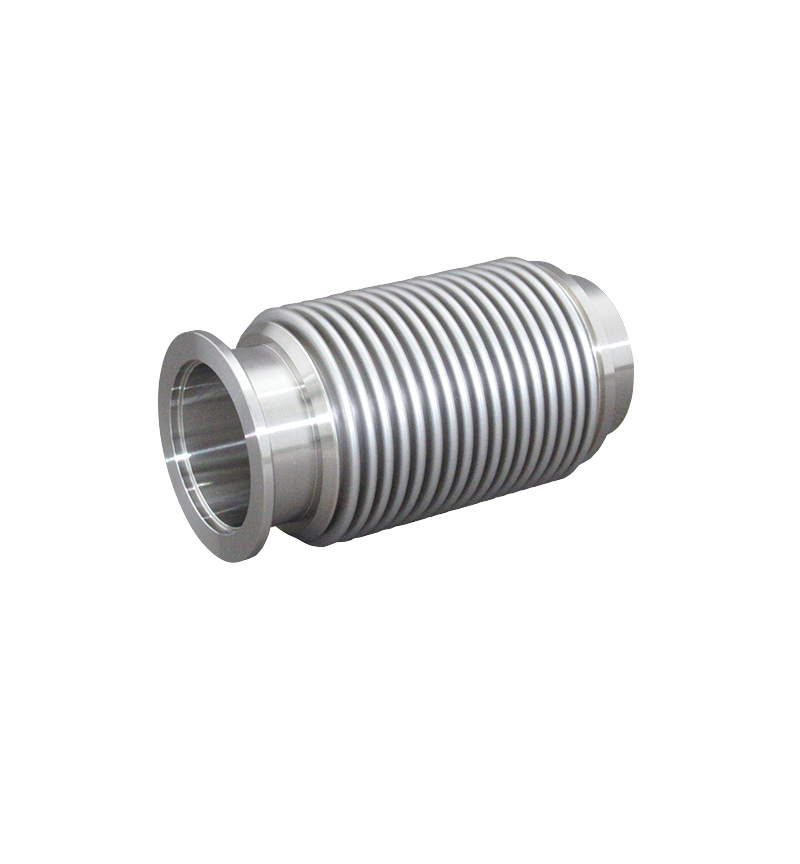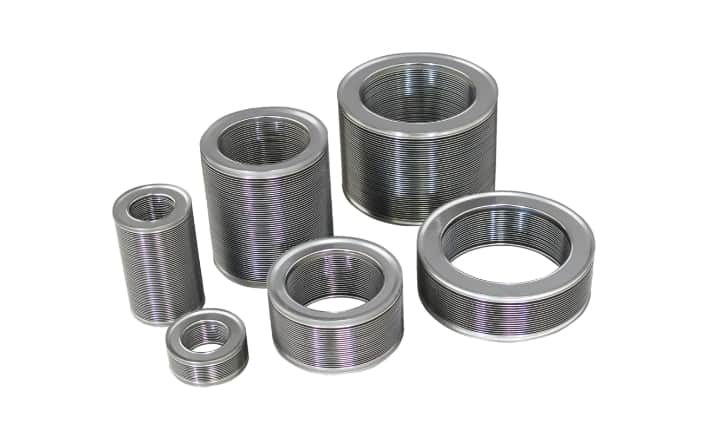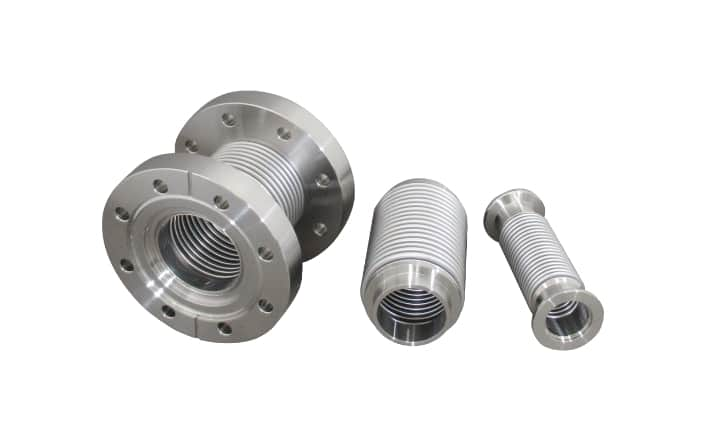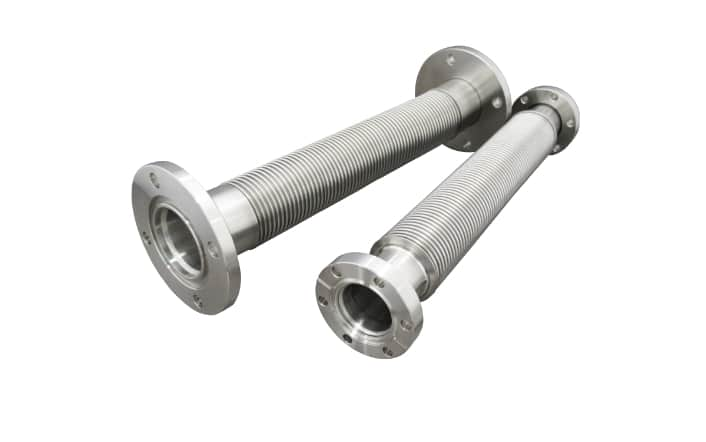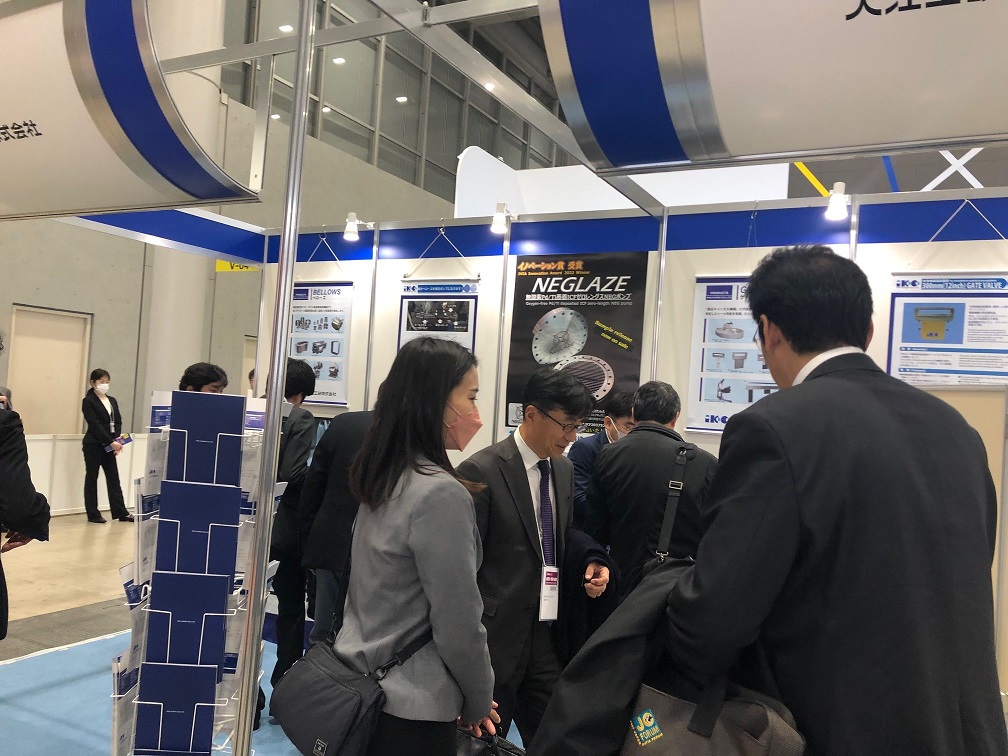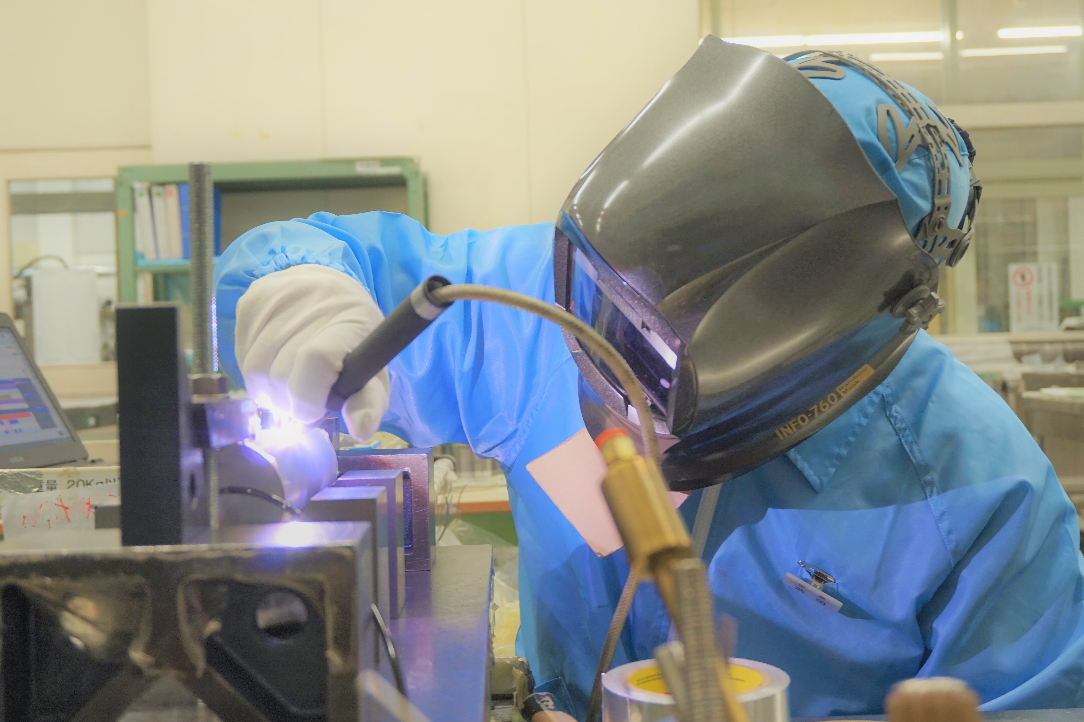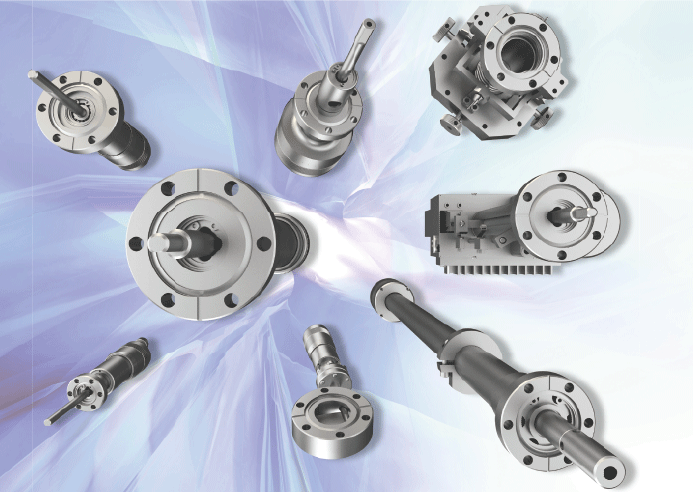- HOME
- HOME
- Product Information
- Metal Bellows
- Formed Bellows
Formed Bellows
Formed bellowsis longer than welded bellows and various manufacturing methods have been devised.The most widely used is the mechanical roll forming method and bulge forming method by hydraulic pressure.
IRIE KOKEN uses its own original hydroforming method.
- These bellows are manufactured by forming work, so, the thread height can be freely changed.
- There are fewer manufacturing processes, so, mass production can be performed by dedicated machinery, etc., to offer uniform quality.
- Compared with welded bellows, manufacturing costs are low.
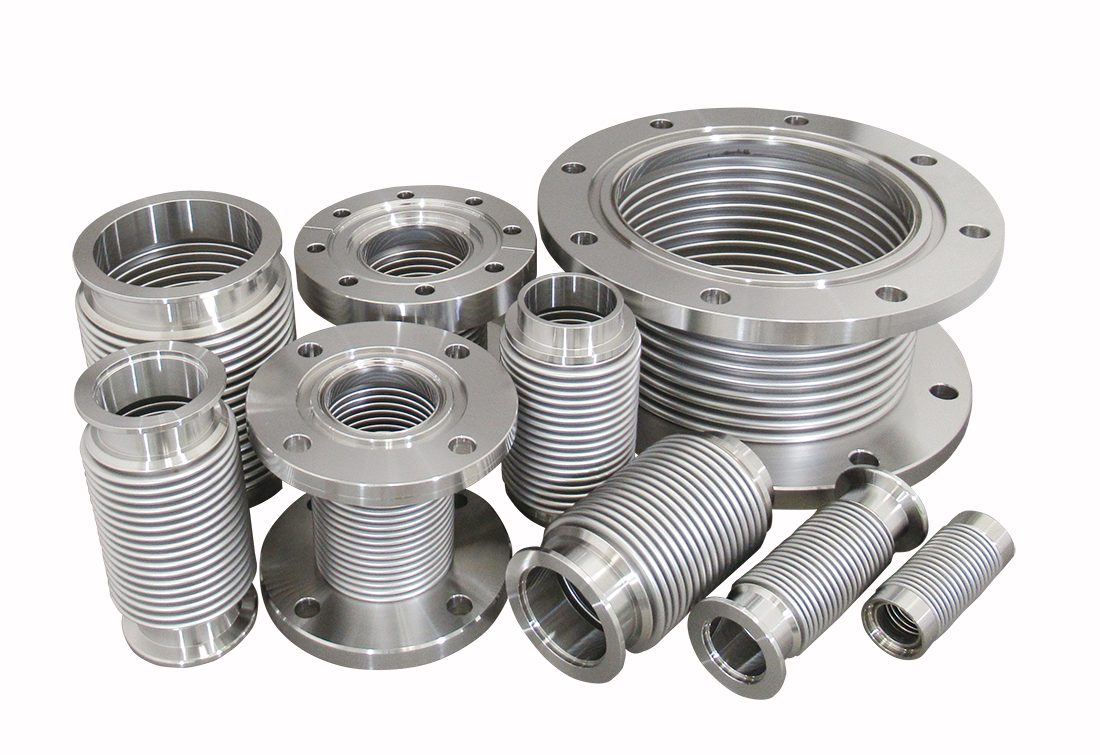
Standard Formed Bellows
Our lineup includes six types of formed bellows with a flange or fittings at both ends.
All can be used under the following pressure, temperature, and specific life conditions to obtain predetermined operating strokes.
Standard Specifications
| Pressure Condition | (Internal) Vacuum (External) Atmospheric pressure |
|---|---|
| Temperature Conditions | Ordinary temperature (baking temp. max. 250°C) |
| Operating Conditions | Axial displacement only |
| Leak Rate | 1×10-9 Pa・m3/s or less (IF standard products only1×10-7Pa・m3/s or less) |
| Specification Life | 10,000 repetitions |
IF standard products
Formed bellows with JIS vacuum flanges-------------------------------------------------------------------------------------- Bellows:SUS316L
Flange:SUS304
IC standard products
Formed bellows for CF flange connection and pipe connection-------------------------------------------------------------------------------------- Bellows:SUS316L
Flange:SUS304L
PF standard products
Formed bellows with pipe end-------------------------------------------------------------------------------------- Bellows:SUS316L
Flange:SUS316
Individually Designed Product

Even if standard products do not meet the specifications
We will consider them individually.
- I want a more compact design
- I want to allow displacement in directions other than the axial direction.
- I want to use it for pressurization as well.
If you have a specific request such as, please let us know the details of your specifications.
Please feel free to contact us as we will propose the optimal design for various uses.
FAQ
What method is used for moulding?
We use the hydraulic forming method, which is flexible and has a large degree of elasticity.
What are the characteristics of welded bellows compared to welded bellows?
Although less expensive than welded bellows, they are better able to absorb installation errors and thermal expansion and contraction due to the smaller displacements they can tolerate. They may also be chosen because they are less susceptible to dust emissions from the equipment.
Are there any restrictions on the length of the bellows?
When using our standard products, the length can be changed to any desired length. However, please contact us as the possible production range varies depending on specifications etc.
Related Information
Column
Solution Example

Technical Information
Please take a look at the technical information on bellows.
Inquiry
For document requests and inquiries,
Please contact us using the email form below or by phone.
